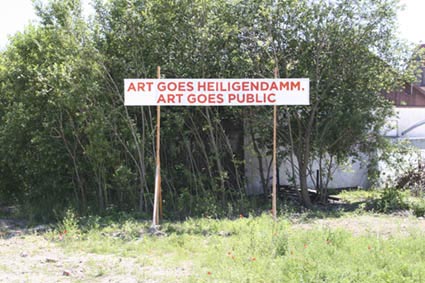 ■ ART GOES HEILIGENDAMM responds to the challenge of going to the places where the social movements are, in order to interact with the different participants. The art interventions are intended to allow a "permeability” of action and perception between forms of presentation and representation in art and social movements. The intention of the project is to bridge the gap between the perception of pros and cons, of black and white. It is a matter of permeability and "growth of the present". Art works conceived during the former G8 summits have, until now, almost exclusively been shown within the art context.
■ ART GOES HEILIGENDAMM responds to the challenge of going to the places where the social movements are, in order to interact with the different participants. The art interventions are intended to allow a "permeability” of action and perception between forms of presentation and representation in art and social movements. The intention of the project is to bridge the gap between the perception of pros and cons, of black and white. It is a matter of permeability and "growth of the present". Art works conceived during the former G8 summits have, until now, almost exclusively been shown within the art context.
The project ■ ART GOES HEILIGENDAMM defines itself as an experiment to enlarge the resonance field of the arts. During the last few years artists have been processing and working with the central themes of globalization, homeland, migration, multiple identities and religion as well as the role played by money and its worldwide distribution.
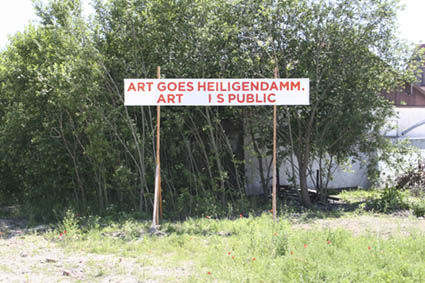 These ideas overlap with those developed within social movements. Until now, art has mostly taken place in designated cultural locations such as theatres, festivals, bienales, conferences and in the white cube of the gallery, where it mostly remains within the closed discourse of the art world. Even performance (theatrical or discursive) has adapted new forms of resistance and thereby extended the forms available to it.
These ideas overlap with those developed within social movements. Until now, art has mostly taken place in designated cultural locations such as theatres, festivals, bienales, conferences and in the white cube of the gallery, where it mostly remains within the closed discourse of the art world. Even performance (theatrical or discursive) has adapted new forms of resistance and thereby extended the forms available to it.
Stage plays and dance performances have adapted non-violent training methods to their art, refractory forms of expression like hip-hop are being transformed on stage into new hybrid concepts. For the conceptualist Jochen Gerz, who always aims for outside participation, "art shouldn't stop at its own barriers or infrastructures but rather propose a vortex (agent:player) for the present." Much recent art practice operates within the actual political context and uses images diffused by media as part of its vocabulary "Contemporary art takes a stand and proposes a new point of view upon the national and international media." (Jan Erik Lundstroem, Berlin Photography Festival 2005).
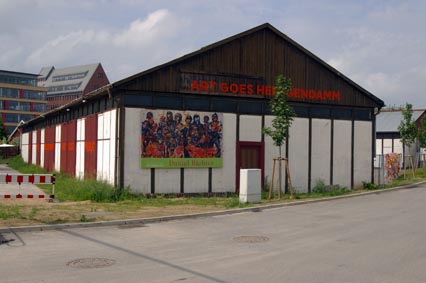 Contemporary art more and more carries with it the responsibility of documenting and spreading information about the global situation. Artists have taken over the task of listening, observing and releasing information about the micro and macro events to which politicians and media have become indifferent.
Contemporary art more and more carries with it the responsibility of documenting and spreading information about the global situation. Artists have taken over the task of listening, observing and releasing information about the micro and macro events to which politicians and media have become indifferent.
Since the documenta X, one can observe a dislimitation of the traditional art categories as well as the increasing integration of art into a social context. All over the world we notice the urgency of dialogue between different cultures, which can not take place without artists since their opinions are not based upon tactical and strategic interests like diplomacy or economy but rather refer to the universality and the freedom of art.
Art research movements focus on the undiscovered and the suppressed, on questioning the status quo and like all culturally and anthropologically related movements, are searching not for the foreign in themselves but rather see themselves as an embodiment of difference.
Unlike the state, art is not tied to any hierarchical interest. Therefore it has more elbow room to express an opinion. Throughout the world dance, literature, theatre and music have been shaped by various cultural influences, styles and aesthetics in order to form their own hybrid methodologies. By doing so, they have trespassed on the classical economic schema of import and export.
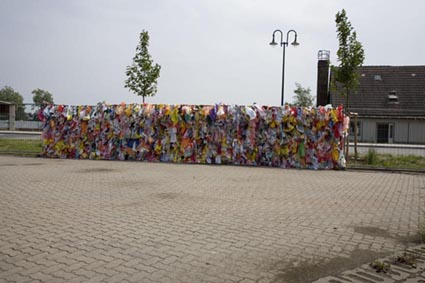 Liberation movements have also influenced artists whose artworks have then in turn been criticised by social or political movements. The American historian Vincent Harding evokes a study about the influence of the black and Caribbean insurgency on music, which in turn influenced other insurgencies in Beijing, South Africa and Eastern Europe. Hybridisation is not a new cultural process and ultimately it is the only way for cultures to develop themselves. Through the extent and immense speed with which cultural globalisation is spreading, it obtains a new explosiveness and potential of focus.
Liberation movements have also influenced artists whose artworks have then in turn been criticised by social or political movements. The American historian Vincent Harding evokes a study about the influence of the black and Caribbean insurgency on music, which in turn influenced other insurgencies in Beijing, South Africa and Eastern Europe. Hybridisation is not a new cultural process and ultimately it is the only way for cultures to develop themselves. Through the extent and immense speed with which cultural globalisation is spreading, it obtains a new explosiveness and potential of focus.
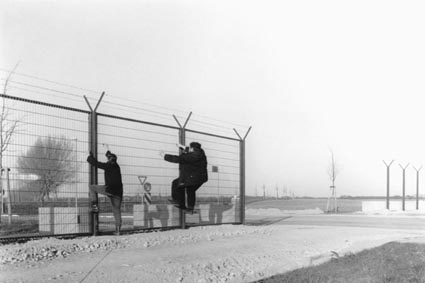 Parts of ■ ART GOES HEILIGENDAMM refer to the mobility factor in globalisation. They are simultaneously a response to the logistic situation in-site, which is not entirely possible to anticipate.(what margins does art have, in which public places is it possible to exhibit the artworks, which public places are being claimed by the G8 for their security?). Other works deal with issues such as protection and abandon. For ■ ART GOES HEILIGENDAMM the disappearance and construction of new boarders, overcoming them physically or mentally, is a central theme.
Parts of ■ ART GOES HEILIGENDAMM refer to the mobility factor in globalisation. They are simultaneously a response to the logistic situation in-site, which is not entirely possible to anticipate.(what margins does art have, in which public places is it possible to exhibit the artworks, which public places are being claimed by the G8 for their security?). Other works deal with issues such as protection and abandon. For ■ ART GOES HEILIGENDAMM the disappearance and construction of new boarders, overcoming them physically or mentally, is a central theme.
■ ART GOES HEILIGENDAMM wants to bring already successful productions from the art metropolis to the culturally rather poorly developed region of Mecklenburg-Vorpommern as a statement against short-lived "one-way cultures". Part of the project will consist of workshops with children and adolescents and other activities that involve the public. This integral part of the art project is about the survival strategies of young children in countries like Zimbabwe, Brazil or Columbia and what globalisation means to them. The purpose of these workshops is to open the sensibility and minds of the populace toward other cultures.
 ■ ART GOES HEILIGENDAMM is coooperating internationally, nationally and regionally with: G8-Alternativ-Summit; Dropping Knowledge, Slobodnakultura, Belgrad; NOMAD Theatre Wien; World Parliament of Clowns u.a. The NGOs invite prominent speakers such as the Nobel prize winner gari Mathai; Vandana Shiva; Jean Ziegler; Raida Hatoum, Étienne Balibar, Ignacio Ramonet, Brian Holmes, Madjiguène Cissé, John Holloway u.v.a.
■ ART GOES HEILIGENDAMM is coooperating internationally, nationally and regionally with: G8-Alternativ-Summit; Dropping Knowledge, Slobodnakultura, Belgrad; NOMAD Theatre Wien; World Parliament of Clowns u.a. The NGOs invite prominent speakers such as the Nobel prize winner gari Mathai; Vandana Shiva; Jean Ziegler; Raida Hatoum, Étienne Balibar, Ignacio Ramonet, Brian Holmes, Madjiguène Cissé, John Holloway u.v.a.
■ ART GOES HEILIGENDAMM is supported by: Hansestadt Rostock, Landesregierung Mecklenburg-Vorpommern, Heinrich-Böll-Stiftung Berlin; Die Grünen | EFA im Europaparlament; Fonds Darstellende Künste e.V.; Pro Helvetia, Schweizer Kulturstiftung; die tageszeitung; Hamburger Stiftung für politisch Verfolgte; Goethe Institut Ägypten; Collection Falckenberg; Collection Marzona; Daniel Richter; and by NGBK Berlin; KW Institut for Contemporary Art Berlin, Ströer out of home media; Labor Pixel Grain Berlin and more than 50 private donators.





